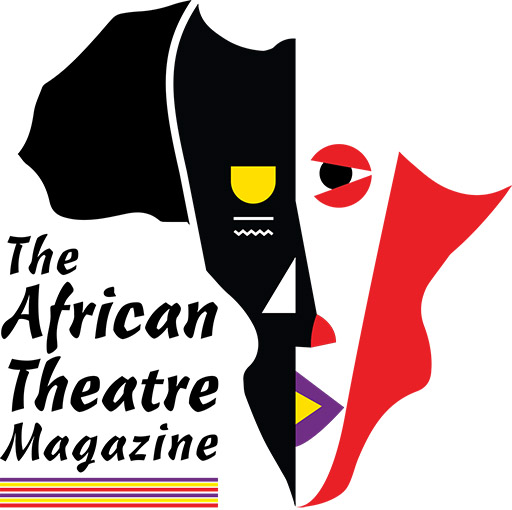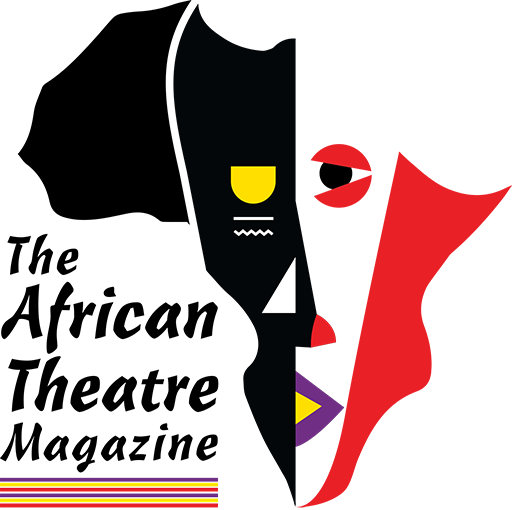Ossie Enekwe, Dance and Healing
Not even an enemy can write a history of Dramatic Literature in Nigeria where the name Ossie Enekwe is met absent. This scholar, who was also a playwright, actor, short story writer, and many other things, spearheaded the establishment of the Department of Dramatic Arts, firstly as a sub-department under the English Department, then as a full-fledged department which we today know as the Department of Theatre and Film Studies, in the of University of Nigeria, Nsukka. This happened at a time Nigerian scholars trained in the West always run home to help build, unlike now when, to quote Warsan Shire, home has become “the mouth of a shark” for scholars and students alike.
Enekwe was very interested in dance as drama leading him to author the book Theories of Dance in Nigeria: An Introduction in 1991. In Dance of Restoration, the scholar decides to go beyond theorising to creatively showing how dance can be drama. He became fixated on dance, even beyond the theatre, giving it the power of healing and restoration.
His play, Dance of Restoration, published on Okike: An African Journal of New Writing, was first directed by Esiaba Irobi, another late playwright of enviable portfolio, in 1997. On 11th September, 2024, as part of the Department of Theatre and Film Studies, UNN “Festival of Plays”(the festival normally serves as the practical exam for the course “Introduction To Directing,”) Dance Restoration came to stage again, directed this time by Samsong Ganiru and Dabeluchukwu Ibik, both penultimate students of the department. The course is coordinated by Dr. Austin Okeke and Dr. Ikechukwu Erojikwe, former students of Prof. Onuora Ossie Enekwe.
See also: King Orizu, Afịa Ọlụ Festival and Traditional Igbo Community Theatre
Dance of Restoration, War, and Its Survivors
Soldiers. Marching. Halt. Stand at attention! The soldiers to receive orders from their commander, who after the initial formalities commands them to make merry for the war has ended. The soldiers break into a mechanised military dance, which later loses its mechanicalness but never its military nature. The dance is so wonderfully choreographed that the audience cheers and clamours for more. Before the dance, the commander, Somtochukwu Johnbosco Obinna, proves to be indeed an actor. From his carriage to the way he shouts his commands, actually sings them, like someone who has never been anything apart from a military general, or a drill master. His performance brings the first wave of excitement to the audience, and to the credit of all the other actors and actresses, that excitement is never diminished. Only climbing from crescendo to crescendo.
When the soldiers leave the battlefield, the stage becomes a village household with its inhabitants in joyful waiting. The war has ended and this family and the whole village awaits the return of their son, Tony (Godwin Winner Chibuike). Tony’s sister, Ada (Amarachi Caitlin Onyekwere) refuses to marry until Tony returns and their Uncle (Chibueze Victor Innocent) wants that to be as fast as possible so that the barrels of palm wine the in-laws will bring will find new home in his belly.
See also: Faded: Beyond the Dance
Upon return, Tony’s behaviour leaves the maidens no chance to display the welcome dance they have been preparing for that moment. He returns, but as the Grandma (Chidimma Ruth Ilojeme) would say, without his spirit. When family members go to hug him, Tony sees enemies advancing and employs all sorts of martial art skills to throw them off. With time everyone learns not to hug him, not to get too close. When others hear a knock on the door, Tony hears the sound of bombs and shouts “take cover,” as he does so himself. His gun never leaves his side and his barrel discriminates not against who it can face. When Tony is not hallucinating, he is staring long into space. The “thousand-yard stare” is so-called. Even when he is offered food, he eats with the urgency of a soldier unsure of when the next shelling when happen, when the next plate of food will come… if another plate of food will come. The nicety of using spoons is an unaffordable luxury as he flings the spoon away and tries to swallow all the contents of the plate in two dives of his palms. Tony is damaged by the war even if he left with his pulse still beating.
Healers and Dancers
His return being one awaited on by the whole village also makes his condition a public one. Grandma comes and stays behind to discuss measures that can be taken to cure Tony. Discussion is ongoing as two ladies (Racheal Eligbame and Chinyere Favour Nwafor) dressed in lab coats enter, uninvited, claiming to be medical professionals who have come to offer their free service out of pity and love for Tony. The doctor’s diagnosis is that of “economic meltdown,” in a scene that marks the play’s full turn to comedy even as Tony’s tragic condition remains central to the play. The doctor and nurse pair perform with an exaggerated sense of seriousness, bamboozling the household with terms both within and outside the medical register, entertaining no questions and maintaining that what they are doing is far beyond the whole household’s comprehension, since they have no university graduate in their midst. Until Tony draws his gun and both doctor and nurse flees for their safety, ending the quack medical intervention.
See also: Dance, Folklores and Drama: A Review of Adesunloye’s Olajumoke
Many other measures are taken. Members of the white garment church, known as Cele People are invited to perform their own healing. With Bibles and crosses of various sizes and bells, they do their own dance of deliverance and restoration. Joseph Ukoha’s performance shines most here. With his funny dance steps that combine the spiritual and the sensual, and the one-liners he drops, wittily changing the meanings of trendy internet sayings in such a way it draws laughter from the audience. His obviously off-script interjections sometimes play to the gallery, eliciting what tethers close to “cheap laughter” from the audience, an act Enekwe himself in his “Beyond Entertainment…” lecture refers to as one of the “negative uses of theatre,” but there is no denial of the fact that it elevates the comic nature of the play as clearly intended by the directors.
When it seems that the Christian god may not have a solution to Tony’s problem, the family seeks the services of a Native Healer (Chinedu Raphael Omeh), whose confidence alone is enough to draw back Tony’s senses (his Grandma calls it his spirits) from wherever it went to. Assured in his abilities, the native healer performs rituals and incantations, invokes all the gods known to him, but no one tells him to scamper away when Tony lifts and flings him like an annoying cockroach. At that point it begins to seem like Tony’s situation is a hopeless one, he’s tied up, but Grandma never gives up hope.
Enekwe in an interview with GMT Emezue shared his belief in the power of the ogene, a metal gong, to move the spirit of men. This belief filters into the play as Grandma, the only one who still has hope for Tony’s healing brings an ogene to summon back his spirit, wherever it might have travelled to. In the spirit of keeping hope alive, she persuades Ada to revive the dance rehearsals. Afterall, they had been rehearsing to welcome Tony. He is back and must be welcomed. The day the dance is finally displayed becomes the day of Tony’s restoration, as his spirits, his senses, return. He picks up the gong and joins in the dance of his restoration.
See also: The Isandlwana Lecture – An African Triumph Entrances Audiences at the Soweto Theatre
What Can Dance Not Do?
Godwin Winner Chibuike is an intelligent and brilliant actor. A creative problem solver. When a member of the Cele group forgets a bell on the stage making it an uncomfortable presence in a scene in which it doesn’t belong, the actor invents an episode of insanity that converts the bell to a prop that marks his mental deterioration. He embodies Tony to perfection. The absent gazes, the rushing of food, the dive for cover, Godwin leaves no doubt that he has been so severely affected by war. It can be any war since it is not named, though considering the history of the playwright who fought in the Biafra war and published poems and short stories on it, one can say, with certainty, that Dance was inspired by the Biafra war.
From the set to the costumes and makeup, members of the crew maximised the little resources they have. While better costumes could have been procured, especially as it regards the military uniforms, cost means they improvise, and improvisation is an integral aspect of theatre that requires a certain level of intelligence to be successful. An unintended consequence of this improvisation is that the slightly uncoordinated uniforms of the soldiers remind one of the lack of clothing the Biafran Army suffered as the war waged on. The chorus and the dancers too did not fail to give their best, driving the production to near perfection, making up what they lack in glamour with the rawness and beauty of the human body.








Discussion about this post